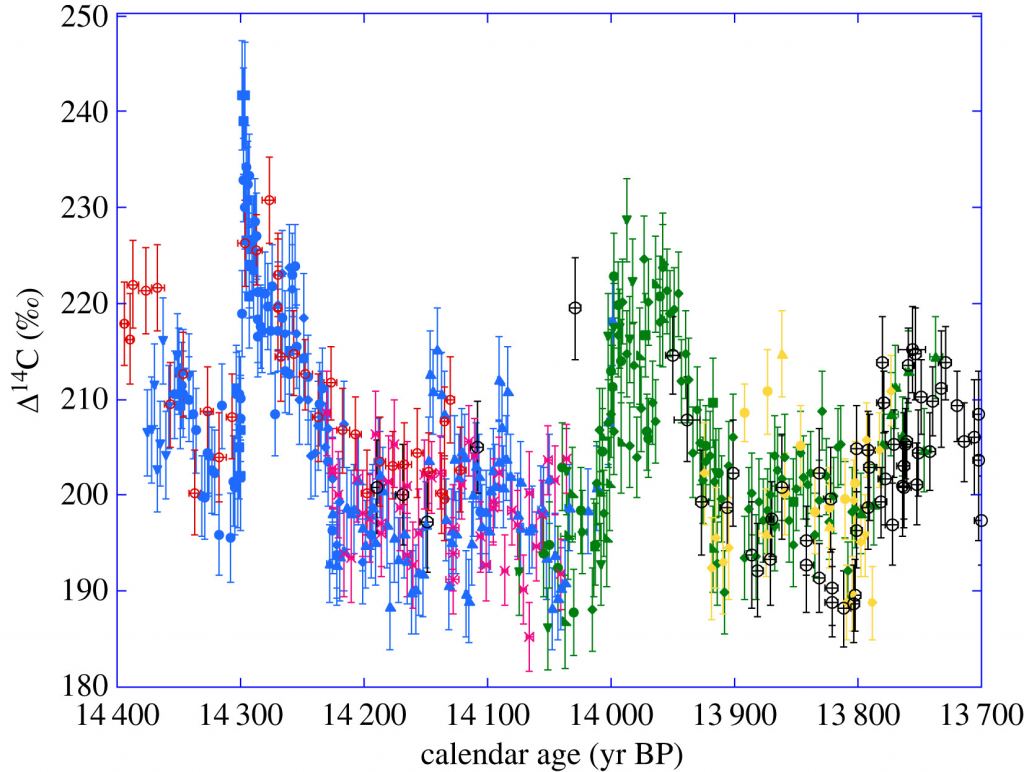The Sun is such a stable presence in our lives that we often take it for granted. Few things are as certain sure as the rising of the Sun each morning, and the cycles of the seasons mark the years of our lives. But the Sun is a star, and stars can sometimes be unpredictable. They can emit powerful solar flares and powerful X-rays. With our deep dependence on technology and electricity, the Sun poses a small but real risk to our civilization. As a recent study shows, the Sun has had some extremely powerful flares in recent cosmic times.
We have only been observing the cycles of the Sun since the 1600s, and only in the last century have we had the technology to monitor magnetic storms and flares. Compared to the history of humanity, that's an extremely narrow window of time. But even then we have had a few instances of solar activity impacting our technology. In 1989 a solar flare triggered a regional blackout in Quebec, and in 1859 the infamous Carrington Event was so powerful it affected the rudimentary telegraph system of the day. If the Carrington Event happened today there would be power blackouts on a global scale, to say nothing our our satellite systems such as GPS.
So we know that powerful events can happen, but to understand how common they are we have to do a bit of historical digging. One way to do that is to look for what are known as Miyaki events. These are spikes in carbon-14 (14C) levels seen in samples of ancient tree rings. Carbon-14 is generated in Earth's upper atmosphere when high-energy particles strike nitrogen atoms. Since14C is radioactive with a half-life of 5,730 years, we can use it to date living things and organic material.
The production of14C is pretty stable, but when there is a large solar flare the production rate spikes. This yields a spike the the levels of things living at the time. The first demonstration of this was published in Nature by Fusa Miyake et al. Since then we have found five verified Miyaki events and four additional candidates. This new study adds another event to the list, and if confirmed it will be the largest confirmed solar flare by far.
The team looked at the remains of ancient trees found in the southern French Alps. From the rings of these trees, the team could date the period in which they were alive, and the measured14C levels in the trees ring by ring. Without any solar flares, the levels should show an exponential decay stretching back into history, but they found there was a large spike in carbon-14 for tree rings dated to about 14,300 years ago, indicating that a large solar flare struck Earth around this time. Based on the level of the spike, this flare was twice as powerful as any Miyake event previously observed.
Fortunately, humans living at the time weren't dependent on computer technology and an electric power grid, so the flare would have had little effect on their lives. If a similar flare occurred today, we'd be a bit more inconvenienced.
Reference: Bard, Edouard, et al. " A radiocarbon spike at 14 300 cal yr BP in subfossil trees provides the impulse response function of the global carbon cycle during the Late Glacial. " *Philosophical Transactions of the Royal Society A* 381.2261 (2023): 20220206.
 Universe Today
Universe Today

